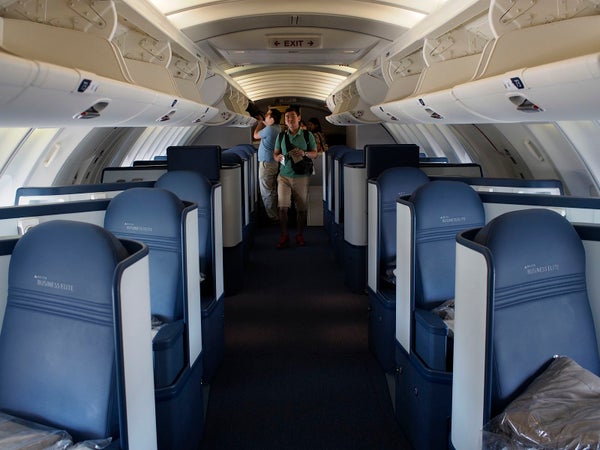This article was published in Scientific American’s former blog network and reflects the views of the author, not necessarily those of Scientific American
Last summer, my family and I boarded a red-eye flight from New York to Madrid. The combined business and personal trip took us to over ten Spanish cities in one month. An exciting prospect for all, and especially for my kids, who couldn’t wait for the trip to begin. Boarding at the JFK airport started right on time and proceeded quickly and efficiently. Even better, the plane was filled to less than half capacity, so not only there was plenty of overhead space for everybody’s hand luggage, but many of the passengers in coach had the unusual luxury of being able to lay down for the overnight flight. Yet, as we walked past the business section towards our coach seats, I remember wistfully looking at the posh–by airplane standards—cubicles of the more privileged passenger class and hoping hard for an upgrade in my next flight.
Modern air travel provides a “social microcosms of class-based society,” states a paper published earlier this year in the Proceedings of the National Academy of Science. The authors of the study, Katherine DeCelles and Michael Norton, of the University of Toronto and Harvard Business School, examined a record of all onboard “air rage” incidents from a large, international airline, to ask if the growing prevalence of air rage—antisocial behavior by airline passengers that become abusive or unruly, compromising safety and antagonizing other passengers and crew members—can be explained by increased seating inequality during flights.
Recent years have seen progressively stronger indicators of class-based seating in airplanes, with first-class cabins becoming comparatively more luxurious than coach, and claiming larger and larger portions of the total shared space in the plane. The resulting class inequality, according to DeCelles and Norton, becomes manifest in two main ways, which they dub “physical” and “situational” inequality.
Physical inequality—or the presence of a first-class cabin in the plane—was linked to more frequent incidents of air rage in economy class, their study revealed.
On supporting science journalism
If you're enjoying this article, consider supporting our award-winning journalism by subscribing. By purchasing a subscription you are helping to ensure the future of impactful stories about the discoveries and ideas shaping our world today.
And situational inequality—defined as boarding from the front, which requires economy passengers to walk through first class to get to their seats, as opposed to boarding from the middle of the plane, which makes the presence of a first-class section less obvious—increased the frequency of air rage events both in economy and in first class.
DeCelles and Norton’s study highlights the fact that our brains preferentially process contrast. Passengers in coach are not more irritable due to their smaller seats or lack of leg room—but by the fact that other people in the same plane enjoy more advantageous circumstances. Discomfort is a lot more tolerable if universally felt—or as they say, misery loves company. DeCelles and Norton’s analysis also shows that it’s not the existence of inequality that matters the most to us: it is in-your-face-inequality that is hardest to overlook. We can ignore the champagne-sipping crowd much more easily when we don’t have the ‘luxury’ rubbed on our faces.
Less intuitive is the finding that situational inequality promotes antisocial behavior in both economy and in first-class sections. DeCelles and Norton do note, however, that instances of air rage in coach and first-class are not symmetrical: whereas emotional outbursts were more common in economy than in first-class, expressions of strong anger occurred more in first-class, suggesting that exposure to the coach passengers walking through could contribute to the first-class occupants feeling more entitled.
The study concludes that physical environments can be a significant influence on antisocial behavior. How these findings will affect the design of future plane cabins, and other settings in which the wealthy and the not-so-wealthy are side by side, remains to be seen.
In the meantime, I’m feeling a bit more sympathetic to my 4-year-old throwing a huge temper tantrum during our flight because her seat did not come with a TV screen. She was taking a stand for social justice.
